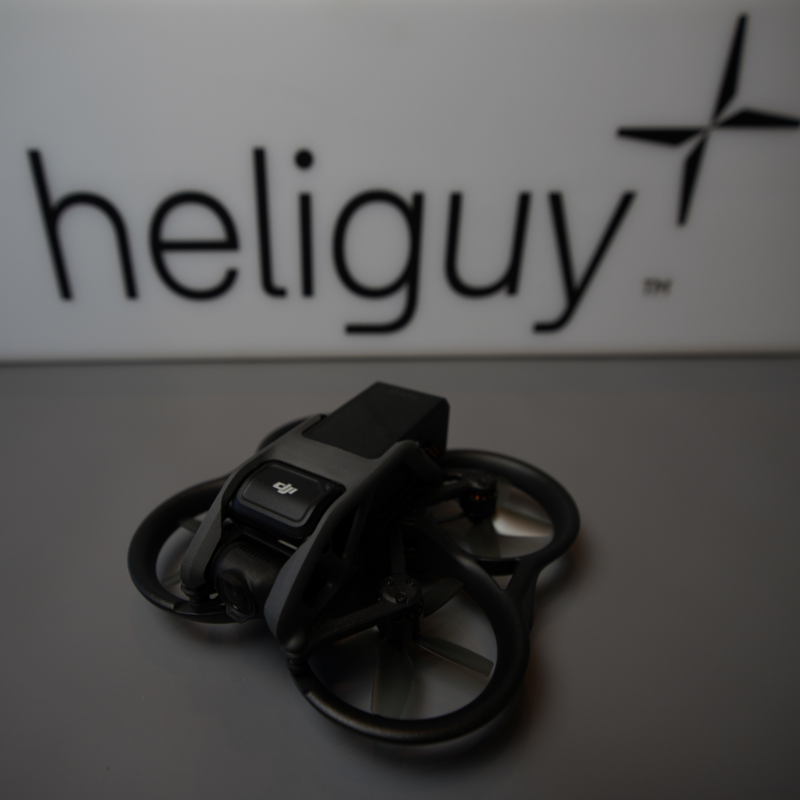
Products
Published on 12 Sep 2022
James Willoughby
DJI Avata Vs DJI FPV
In-depth comparison between the DJI Avata and DJI FPV. Find out which FPV drone is best for you. This guide compares each drone's camera, design specifications, safety features and control methods. ... Read More

Find out the difference between the two DJI FPV drones: The DJI Avata and the DJI FPV;
While both drones are aimed at the FPV market, they have different primary use cases: The DJI FPV is a superfast and highly agile FPV racer, while the DJI Avata is better for capturing cinewhoop content and could be used for internal inspection;
The DJI Avata has built-in propeller guards for enhanced flight safety, a better camera and is a smaller, more portable FPV drone;
The DJI FPV is much faster than the Avata, reaching speeds in excess of 87mph and able to go from 0-62mph in just two seconds;
Both drones can be flown using either the DJI FPV Controller 2, or the DJI Motion Controller to steer the aircraft by hand movements;
DJI Avata is compatible with the new and enhanced DJI Goggles 2, as well as the DJI FPV Goggles V2; The DJI FPV is compatible with the DJI FPV Goggles V2;
The DJI Avata and DJI FPV provide an accessible entry to FPV drone flights.
There are now two FPV drones in the DJI range: The new DJI Avata and the DJI FPV.
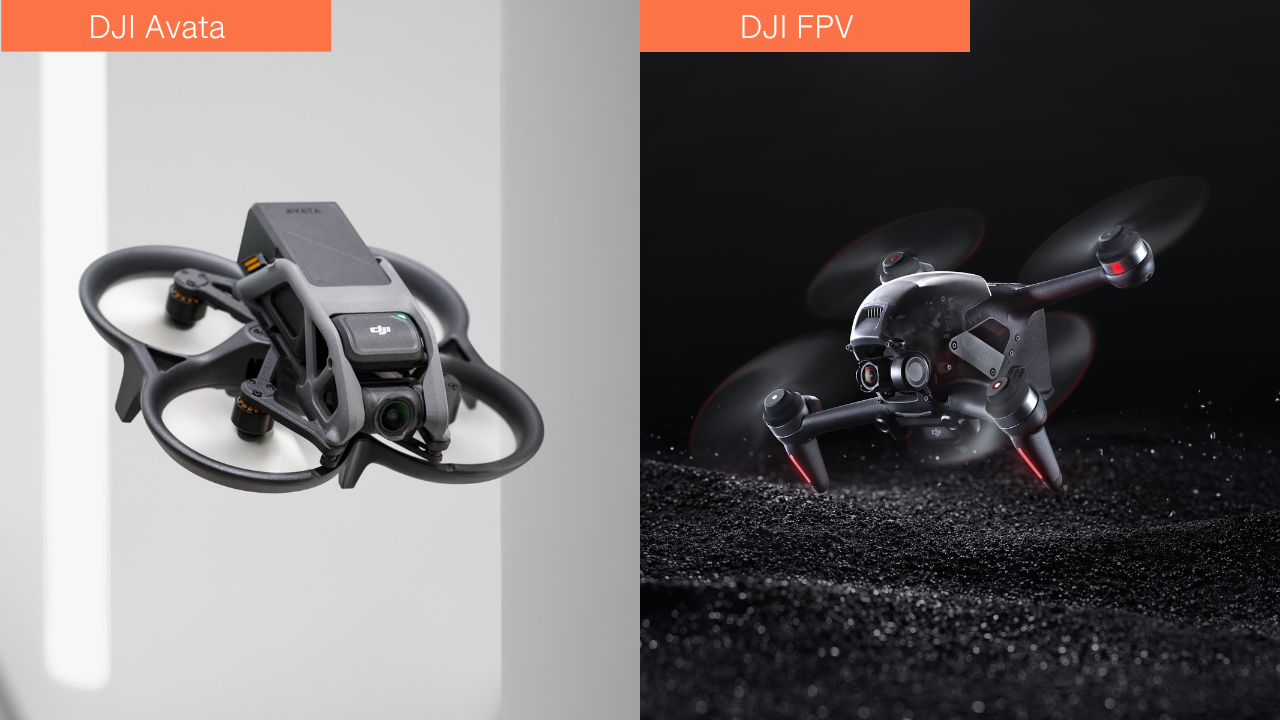
So, what is the best one to choose? And if you already own a DJI FPV, is it worth adding the DJI Avata to your fleet?
In a nutshell, it's fair to say that it does depend on your flying requirements: If you want a high-speed, highly agile drone racer, then the DJI FPV is your best bet, but for other forms of FPV flying, including capturing stylish cinewhoop content in close quarters, then the DJI Avata is a stellar choice.
To find out more and to help you make an informed choice, continue reading this blog for an in-depth comparison between the two drones.
DJI Avata Vs DJI FPV: Key Specifications
The table below provides an at-a-glance overview of the key specifications for the DJI Avata and DJI FPV.
DJI Avata | DJI FPV | |
Weight | Approx. 410 g | Approx. 795 g |
Dimensions | 180 x 180 x 80 mm | 255 x 312 x 127 mm |
Built-in Prop Guards | Yes | No |
Sensor | 1/1.7-inch sensor | 1/2.3-inch sensor |
FOV | 155° | 150° |
Video | Up to 4K/60fps video | Up to 4K/60fps video |
Max Video Bitrate | 150 Mbps | 120 Mbps |
Top Speed | M Mode: 27 m/s S Mode: 14 m/s N Mode: 8 m/s | M Mode: 39 m/s S Mode: 27 m/s N Mode: 15 m/s |
Max Hovering Time | 18 minutes | 16 minutes |
Max Video Transmission Range (CE) | 2km | 6km |
Max Video Transmission Bitrate | 50 Mbps | 50 Mbps |
Video Stabilisation | HorizonSteady; RockSteady | RockSteady |
Compatible Controllers | DJI Motion Controller; DJI FPV Remote Controller 2 | DJI Motion Controller; DJI FPV Remote Controller 2 |
Motion Control | Supports motion control by hand or head movements | Supports motion control by hand movements |
Compatible Goggles | DJI Goggles 2; DJI FPV Goggles V2 | DJI FPV Goggles V2 |
Live View Quality and Latency | With DJI Goggles 2: 1080p/100fps video transmission quality: The lowest latency of 30 ms | With DJI FPV Goggles V2: 810p/120fps video transmission quality: The latency of less than 28 ms |
Internal Storage | 20GB internal storage | None |
DJI Avata Vs DJI FPV: Design
Both drones are FPV aircraft, but they are very different in their design.
Firstly, size. The DJI Avata is a significantly smaller aircraft than the DJI FPV. It weights in at around 410g, compared to the Avata's heavier 795g frame, and has a smaller footprint, measuring 180 x 180 x 80 mm (L x W x H) compared to the DJI FPV's 255 x 312 x 127 mm (or 178 x 232 x 127 mm, without propellers).
The Avata's smaller and lighter design makes it a more portable aircraft and a lot better for slipping into a backpack or something similar to help capture immersive FPV content on the go.
Perhaps the biggest design difference between the two drones is the DJI Avata's built-in prop guards. This enhances flight safety and subsequently, operator confidence, and makes the drone perfect for capturing cinewhoop and close-quarters content, protecting the aircraft in the event of minor collisions.
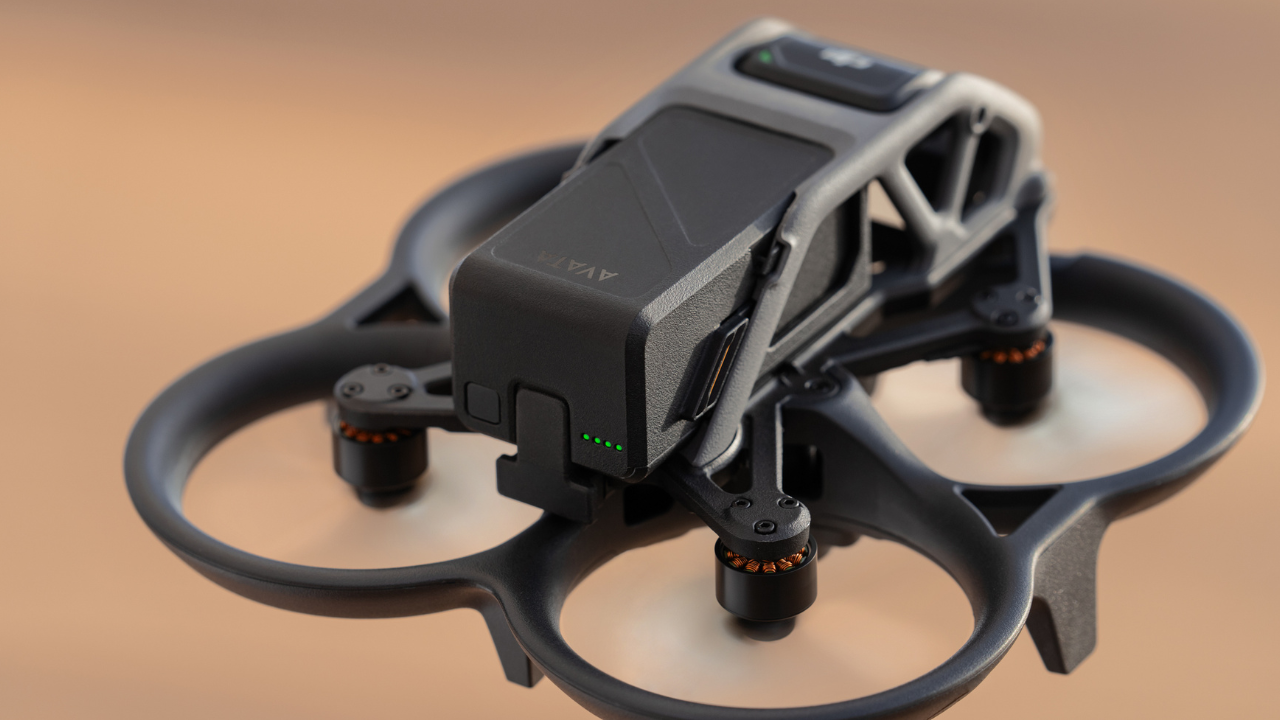
On top of this, the DJI Avata has a rigid cage to largely protect the battery, while its camera is pushed back and sits snug behind a frame. It all helps to ensure that the Avata is a very rugged, durable and protected aircraft.
This protective framing, coupled with the drone's small size, also makes it an attractive tool for internal inspections.
In comparison, the DJI FPV doesn't come with prop guards - although they are available as an additional accessory - and the camera feels a bit more exposed.
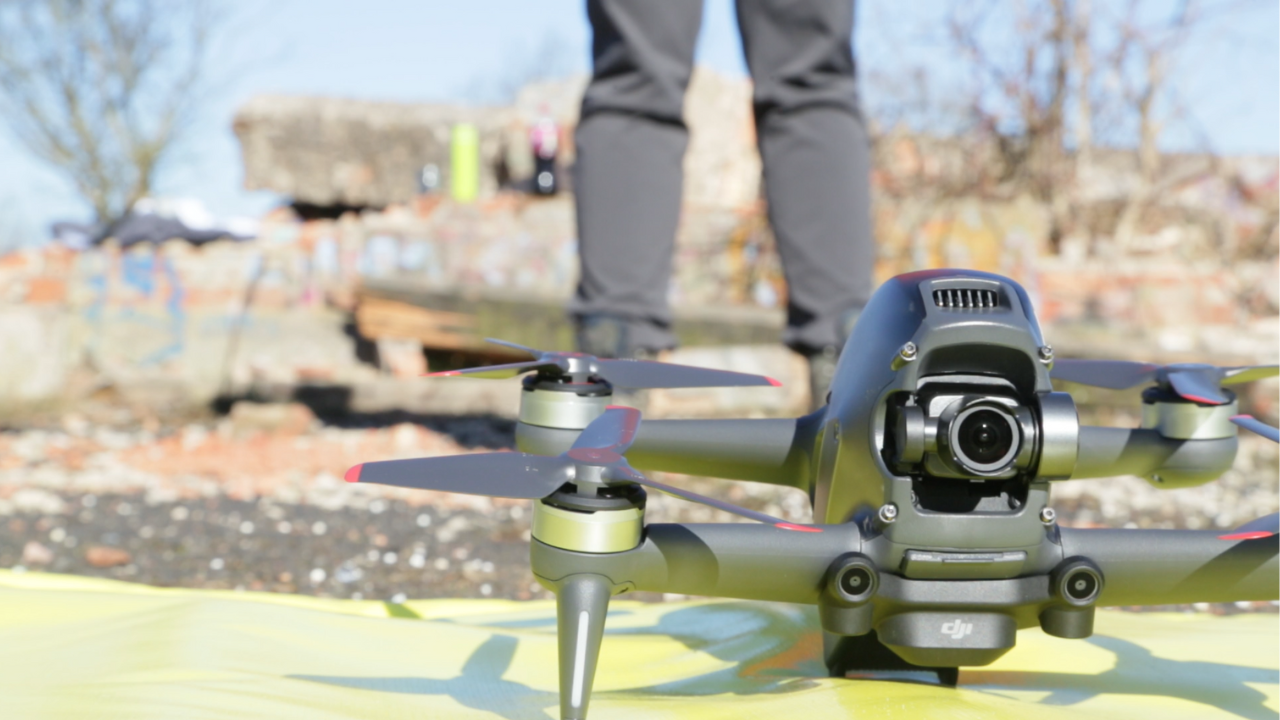
DJI Avata Vs DJI FPV: Camera
The camera is an important part of the FPV drone experience.
The DJI Avata comes out on top with its larger 1/1.7-inch CMOS sensor with 48MP, compared to the DJI FPV's 1/2.3” CMOS sensor with 12MP. The Avata's camera is nothing to be scoffed at, though.
The DJI Avata also has a slightly larger field of view - 155° compared to 150° - sucking operators further into the action.
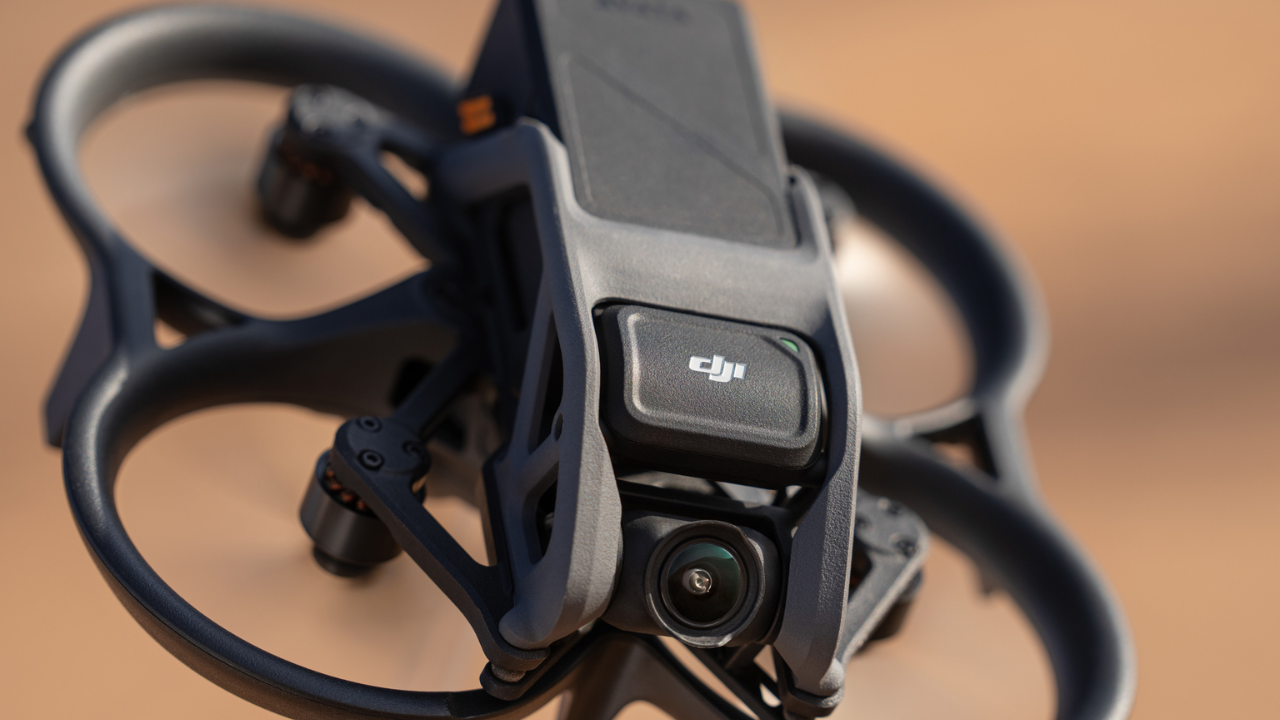
When it comes to video, the DJI Avata and DJI FPV achieve up to 4K @ 60fps.
To ensure shake-free footage, the DJI Avata and DJI FPV benefit from Electronic Image Stabilisation technology.
Both drones come with RockSteady, however the DJI Avata also packs in HorizonSteady for good measure. These EIS modes do the following:
HorizonSteady: Uses DJI's latest stabilisation algorithm to lock onto a levelled horizon in every frame, regardless of the camera's orientation. It allows you to capture smooth and stable footage as you navigate the skies.
RockSteady: Achieved by increasing the shutter speed, analysing the images captured by the CMOS sensor, and compensating by cutting off the edges of these images. In this way, multiple frames are overlaid and finally combined into a single frame that is sharp, clear and accurately exposed.
The table below gives an overview of the DJI Avata and DJI FPV's camera specifications.
DJI Avata | DJI FPV | |
Sensor | 1/1.7-inch CMOS; Effective Pixels: 48 MP | 1/2.3” CMOS Effective pixels: 12 million |
Lens | FOV: 155°; Equivalent Focal Length: 12.7 mm; Focal Length: 2.34 mm; Aperture: f/2.8; Focus Mode: Fixed Focus; Focus Range: 0.6 m to ∞. | FOV: 150°; 35mm Format Equivalent: 14.66 mm; Aperture: f/2.8; Focus Mode: Fixed Focus; Focus Range: 0.6 m to ∞. |
ISO Range | 100-6400 (Auto); 100-25600 (Manual) | 100-12800 |
Shutter Speed | Video: 1/8000-1/50 s Photo: 1/8000-1/50 s | 1/50-1/8000 s |
Still Photography Mode | Single Shot | Single shot |
Max Image Size | 4000 x 3000 | 3840 x 2160 |
Photo Format | JPEG | JPEG |
Video Resolution | With DJI Goggles 2: 4K@50/60fps 2.7K@50/60/100fps 1080p@50/60/100fps With DJI FPV Goggles V2: 4K@50/60fps 2.7K@50/60/100/120fps 1080p@50/60/100/120fps | With DJI FPV Goggles V2: 4K: 3840 x 2160 at 50/60fps FHD: 1920 x 1080 at 50/60/100/120fps |
Video Format | MP4 | MP4/MOV (H.264/MPEG-4 AVC, H.265/HEVC) |
Max Video Bitrate | 150 Mbps | 120 Mbps |
Colour Mode | Standard; D-Cinelike | Standard; D-Cinelike |
EIS | RockSteady HorizonSteady | RockSteady |
Distortion Correction | Yes | Yes |
Supported File System | exFAT (recommended) FAT32 | exFAT (recommended) FAT32 |
Internal Storage | 20GB internal storage | None |
Supported SD Cards | microSD (up to 256 GB) | microSD (up to 256 GB) |
DJI Avata Vs DJI FPV: Performance
A choice between the DJI Avata and DJI FPV can boil down to what exactly you want from the aircraft, or to put it another way, how you want to use it.
In this regard, there is a clear difference between the two, especially when it comes to speed and agility.
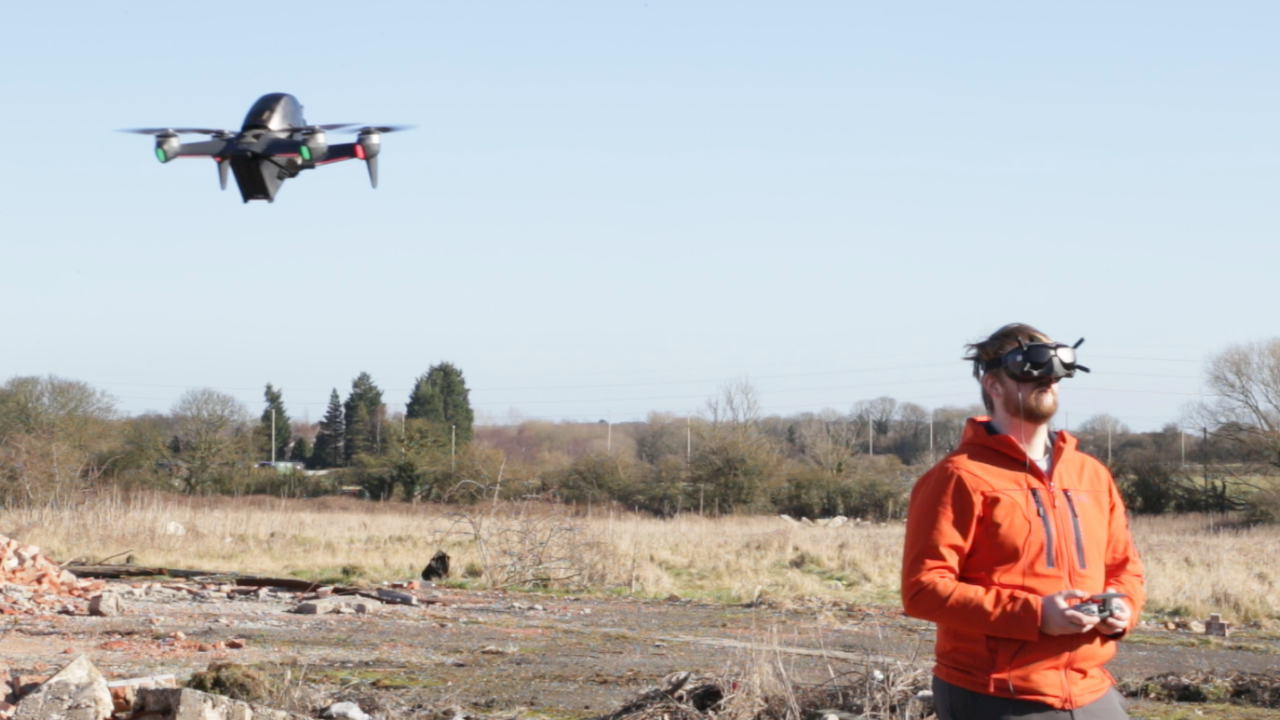
The table below highlights the drones' key speed specs, but essentially, if you want a fast and furious racing FPV drone with rapid acceleration (the DJI FPV can go from 0-62mph in two seconds), major throttle and superior agility, the DJI FPV massively trumps the Avata.
DJI Avata | DJI FPV | |
Max Speed | M Mode: 27 m/s (60.3 mph) S Mode: 14 m/s (31.3 mph) N Mode: 8 m/s (17.8 mph) | M Mode: 39 m/s (87.2 mph) S Mode: 27 m/s (60.3 mph) N Mode: 15 m/s (33.5 mph) |
Max Ascent Speed | S Mode: 6 m/s (13.4 mph) N Mode: 6 m/s (13.4 mph) | M Mode: No limit S Mode: 15 m/s (33.5 mph) N Mode: 8 m/s (17.8 mph) |
Max Descent Speed | S Mode: 6 m/s (13.4 mph) N Mode: 6 m/s (13.4 mph) | M Mode: No limit S Mode: 10 m/s (22.3 mph) N Mode: 7 m/s (15.6 mph) |
The table highlights the drones' speed in M, S and N Modes. These modes do the following:
Normal (N) Mode: The drone operates similarly to other DJI drones, hovering in place with the use of satellite navigation and/or visual positioning systems (VPS) on the bottom of the drone.
Manual (M) Mode: Fly in M Mode for complete, limitless control and the full FPV immersive flight experience. Experienced users can customise parameters and enjoy flight and footage unlike anything else.
Sport (S) Mode: A hybrid blend of M and N Modes, S Mode offers some of the dynamic movement capabilities that come with M Mode along with some of the key safety features of N Mode. S Mode is the middle step between the three modes and was developed to give pilots more room to explore their skills as they get accustomed to the drone.
Aside from speed, the DJI FPV can achieve up to 16minutes of hover time, compared to the Avata's 18 minutes: Although this will be reduced if flying the drones at full throttle, especially in the case of the DJI FPV.
Both aircraft are hardy little fliers, offering the following operational capabilities:
DJI Avata | DJI FPV | |
Max Wind Speed Resistance | 10.7 m/s (23.9 mph) Level 5: Fresh Breeze | 13.8 m/s (31mph) Level 6: Strone Breeze |
Operational Temperature | -10°C to 40°C | -10°C to 40°C |
DJI Avata Vs DJI FPV: Safety Features
The DJI Avata and DJI FPV have a wealth of safety features to enhance flight safety: Especially important for high-octane FPV flights.
We've already mentioned the Avata's built-in prop guards which add durability and protection to the aircraft.
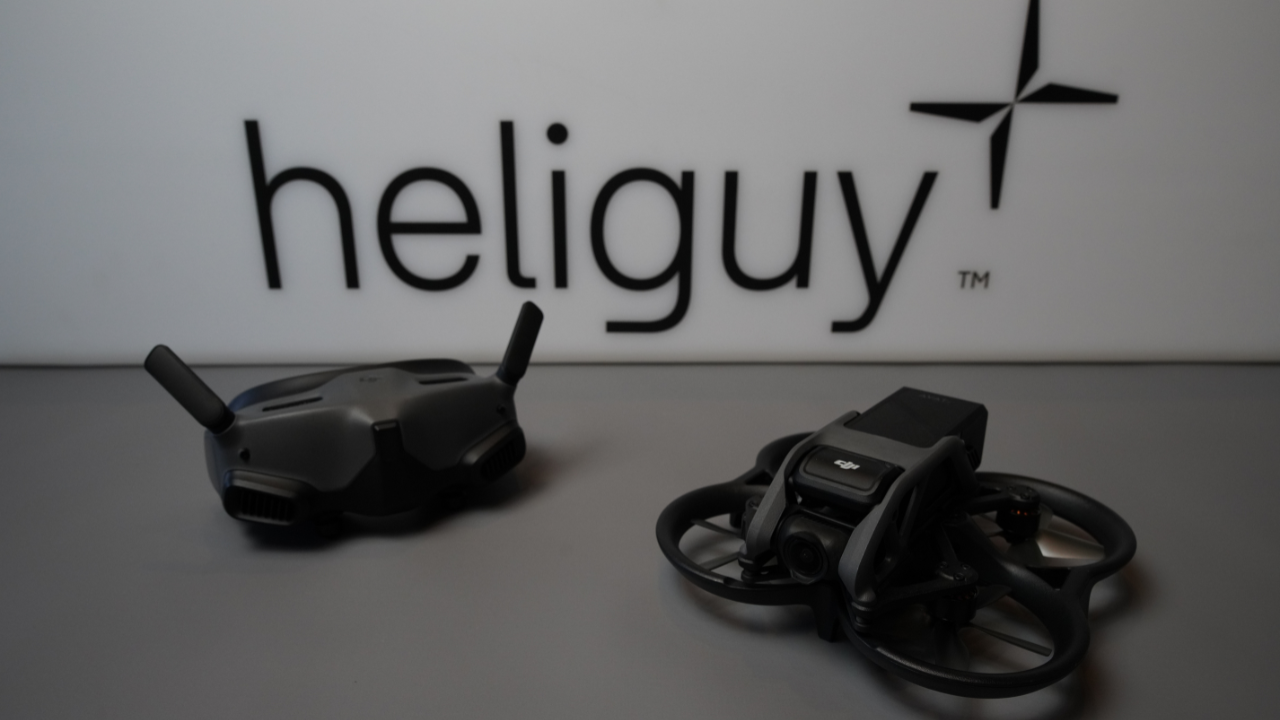
Both drones share some common safety features, such as the emergency break and hover to bring the aircraft to a rapid stop; and turtle mode, which springs back into action if it lands upside down; and return to home functionality.
The DJI FPV aircraft comes with forward and downward vision sensors that can automatically detect objects and decelerate when flying in N Mode.
DJI Avata does not support forward obstacle sensing and avoidance. It only supports downward obstacle sensing when used with DJI FPV Remote Controller 2, or DJI Motion Controller in N Mode and S Mode. Unlike the DJI FPV, it does not have a downward auxiliary light.
To give operators added peace of mind, heliguy™ Repair Refresh crash cover is available for the DJI Avata and DJI FPV. This cover - valid for up to 12 months - offers a free repair or replacement if the aircraft is damaged in a crash. heliguy™ also has an in-house repair centre and drone training team to help you conduct flights safely and legally.
DJI Avata Vs DJI FPV: Controllers
The DJI Avata and DJI FPV can be controlled using the Motion Controller or the DJI FPV Remote Controller 2.
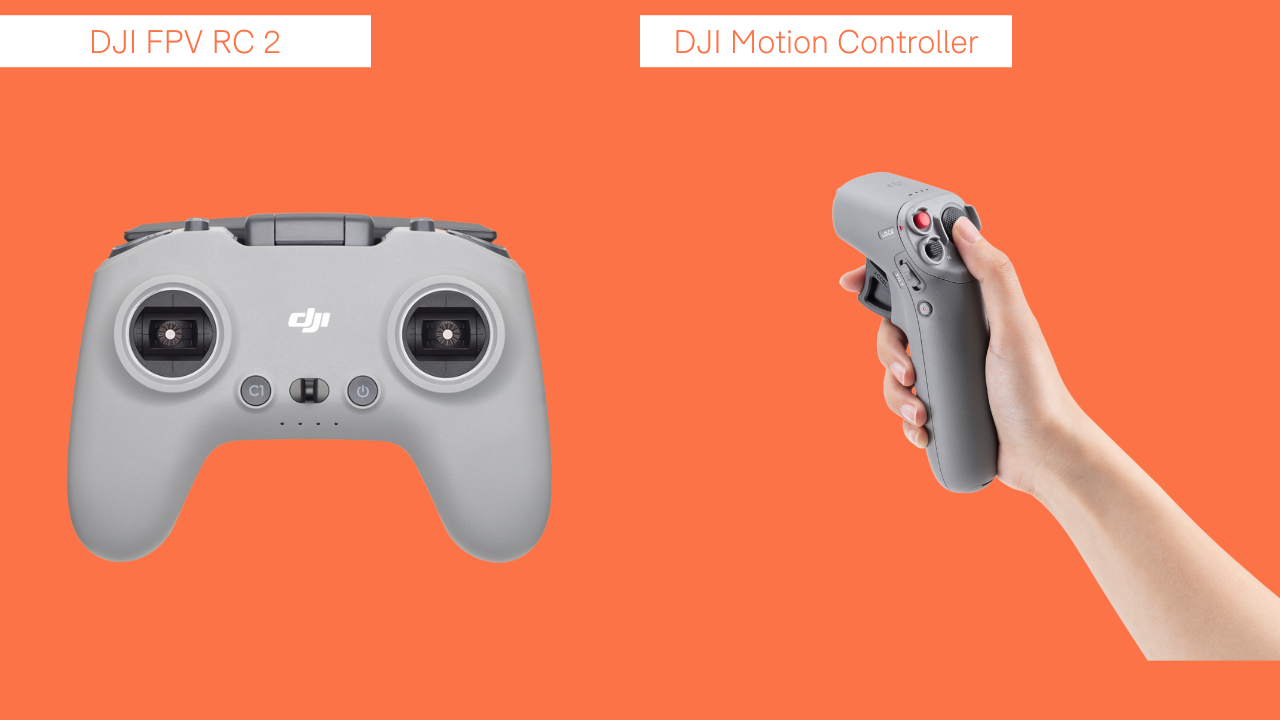
The remote controller speaks for itself, but the Motion Controller is an intuitive joystick which enables operators to control the drone by hand movements.
The DJI Goggles 2 also enable the DJI Avata's camera to be controlled by head movements, as part of the new head tracking feature. More of this, shortly.
Its important to note that the Motion Controller only enables flights in N and S Modes. You need the DJI FPV Remote Controller 2 to fly in M Mode (it also allows flights in N and S Modes).
The DJI FPV Combo comes with the DJI FPV Remote Controller 2 as standard, and the Motion Controller is available separately - while the DJI Avata Fly Smart Combo and DJI Avata Pro-View Combo come with the Motion Controller as standard, and the DJI FPV Remote Controller 2 is available separately.
For the record, the new DJI Goggles 2 are included in the Pro-View Combo, while the DJI FPV Goggles V2 come with the Fly Smart Combo. Read more about the differences between these two combos in our in-depth guide.
Drone-only packages of the DJI Avata and DJI FPV are also available.
DJI Avata Vs DJI FPV: Goggles
The DJI Avata can be used with the new DJI Goggles 2 and the DJI FPV Goggles V2. The DJI FPV can be operated with the DJI FPV Goggles V2.
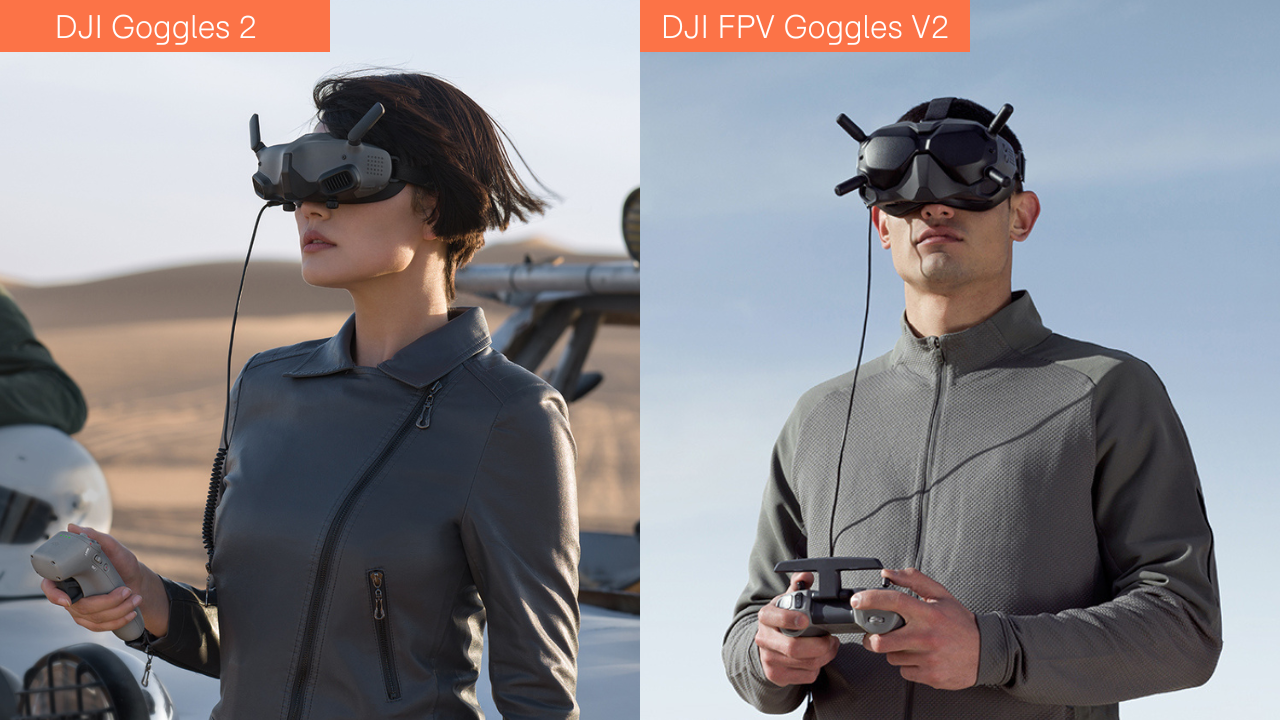
As they are DJI's latest goggles, the DJI Goggles 2 do have some upgraded features compared to the DJI FPV Goggles V2.
DJI Goggles 2 vs DJI FPV Goggles V2: Upgrades
The DJI Goggles 2 have the following upgrades compared to the DJI FPV Goggles V2:
New Control Method
DJI Goggles 2 feature a head tracking function, which allows you to intuitively control the drone's camera with your head movements, for more efficient camera movements and composition.
Lightweight, Portable, and Comfortable
DJI Goggles 2 weigh only 290g, which is 30% lighter than DJI FPV Goggles V2, making it easier to carry anywhere and more suitable for long-term use. The soft foam padding fits well with your face to greatly reduce light leakage.
Screen Material And Display Effect Upgrades
DJI Goggles 2 are equipped with two 1080p Micro-OLED screens. Moreover, they use an independent video processing chip to further improve the resolution and smoothness of video playback.
Diopter Adjustment
DJI Goggles 2 support diopter adjustment from -8.0 D to +2.0 D and also come with free eyeglass frames.
If you require astigmatism correction, or if the goggles' diopter is unsuitable, you can purchase additional lenses and use the eyeglass frames to install them on the goggles.
Wireless Streaming
DJI Goggles 2 support Wi-Fi wireless streaming to display videos from mainstream video software using DLNA protocol.
O3+ Video Transmission
DJI Goggles 2 adopt DJI's latest flagship O3+ Video Transmission, which can achieve high-definition and low-latency video transmission.
DJI Goggles 2 vs DJI FPV Goggles V2: Key Specs
The below table provides a side-by-side comparison of some of the key specs of the DJI Goggles 2 and DJI FPV Goggles V2 to further illustrate the differences between the two.
DJI Goggles 2 | DJI FPV Googles V2 | |
Weight | Approx. 290 g (headband included) | Approx. 420 g (headband and antennas included) |
Dimensions (L x W x H) | With antennas folded: 167.40×103.90×81.31 mm With antennas unfolded: 196.69×103.90×104.61 mm | Without antennas: 184×122×110 mm With antennas: 202×126×110 mm |
Screen Size (Single Screen) | 0.49-inch | 2-inch |
Screen Resolution (Single Screen) | 1920 x 1080 | 1440 x 810 |
Refresh Rate | Up to 100 Hz | 144 Hz |
Live View Quality and Latency | 1080p/100fps Video Transmission Quality: The video transmission latency is as low as 30 ms. 1080p/60fps Video Transmission Quality: The video transmission latency is as low as 40 ms. | 810p/120fps Video Transmission Quality: The video transmission latency is lower than 28 ms. 810p/60fps Video Transmission Quality: The video transmission latency is lower than 40 ms. |
Video Resolution | 4K@50/60fps 2.7K@50/60/100fps 1080p@50/60/100fps | 4K@50/60fps 2.7K@50/60/100/120fps 1080p@50/60/100/120fps |
Supported Video and Audio Playback Formats | MP4 and MOV (video coding formats: H.264 and H.265; audio format: ACC, PCM) | MP4, MOV, MKV (video coding format: H.264; audio formats: AAC-LC, AAC-HE, AC-3, MP3) |
Interpupillary Distance Range | 56-72 mm | 58-70 mm |
Diopter Adjustment Range | -8.0 D to +2.0 D | Not supported |
FOV (single screen) | 51° | 30° to 54°, adjustable Image Size: 50% to 100% |
Max Video Transmission Bitrate | 50 Mbps | 50 Mbps |
Wi-Fi Wireless Streaming | Supports DLNA Protocol | Not supported |
Operating Temperature Range | -10° to 40° C (14° to 104° F) | 0° to 40° C (32° to 104° F) |
Power Input | DJI Goggles 2 Battery | DJI Goggles Battery |
Supported SD cards | microSD (up to 256 GB) | microSD (up to 256 GB) |
Operating Time | Approx. 2 hours (using DJI Goggles 2 Battery) | Approx. 110 mins (using DJI Goggles Battery) |
DJI Avata Vs DJI FPV: Summary
The DJI Avata and DJI FPV provide pilots with an easier, super fun, and more accessible FPV drone experience.
Launched in 2021, the DJI FPV has become a popular product and the DJI Avata is sure to follow suit.
Interestingly, while they are both FPV drones, they do appeal to different audiences. In this respect, the DJI Avata shouldn't be seen as a direct replacement of the DJI FPV, rather a complementary FPV drone which can stand beside the DJI FPV in a drone line up.
The increased speed, throttle and agility of the DJI FPV make it a stellar choice for high-octane FPV flight and racing.
On the other side of the coin, the DJI Avata - with its smaller size and built-in prop guards - make it perfectly suited for capturing cinewhoop content and even conducting internal inspection missions.
With their increased FOV and use of goggles for an immersive flight experience, FPV drones offer something very different from a traditional drone: Hence the reason for their popularity.
DJI has tapped into this with two quality FPV offerings. Essentially, the right one for you boils down to what you want from your FPV experience.
